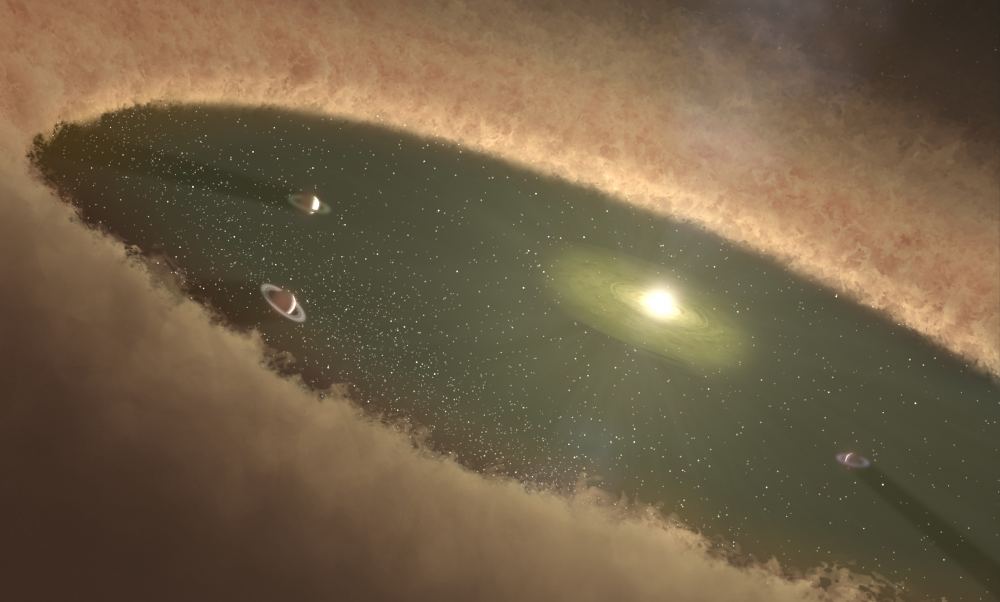Planets Might Protect their Water Until their Star Settles Down

Artist's conception of early planetary formation from gas and dust around a young star. Outbursts from newborn and adolescent stars might drive planetary water beneath the surface of rocky worlds. Credit: NASA/NASA/JPL-Caltech
POSTED ONMARCH 16, 2023 BY CAROLYN COLLINS PETERSEN
Creating rocky planets is a messy, dangerous, hot business. Planetesimals accrete together, which creates heat and pressure on the newborn world. The nearby adolescent star bombards them with intense radiation. That likely “bakes off” any surface oceans, lakes, or rivers, which is a disaster if you’re looking for places where life might arise or exist. That’s because life needs water and planets around these stars are among the most likely to harbor life. But, that doesn’t look too hopeful if the radiation steams the water away.
Scientists at the University of Cambridge in the UK created a complex model that describes a world with most of its water locked deep below the surface, not in pools or oceans, but in rocks. Technically, it’s trapped in minerals deep beneath the surface. If conditions are right on worlds around these most common stars in the Galaxy, there could be enough water in them to equal several Earth oceans.
Clare Guimond, a Ph.D. student at Cambridge, along with two other researchers, came up with the model, which describes newborns around M-type worlds orbiting red dwarf stars. “We wanted to investigate whether these planets, after such a tumultuous upbringing, could rehabilitate themselves and go on to host surface water,” she said. Her team’s work shows that these planets could be a very good way to replace liquid surface water chased off in the host star’s early life. “The model gives us an upper limit on how much water a planet could carry at depth, based on these minerals and their ability to take water into their structure.”
Sequestering Water on a Forming World
M-type red dwarfs are the most common stars in the Galaxy. That makes them good subjects to study the variables of planetary formation. They form just as other stars do. Once past infancy, they also tend to be outbursty and temperamental, just like other stars. However, they stay colicky much longer than other stars. That doesn’t bode well for the surfaces of any planets (or protoplanets) nearby. If it isn’t baked away, the water migrates underground. But, would it happen with every rocky planet? What size world does it take to do this?
More:
https://www.universetoday.com/160602/planets-might-protect-their-water-until-their-star-settles-down/
